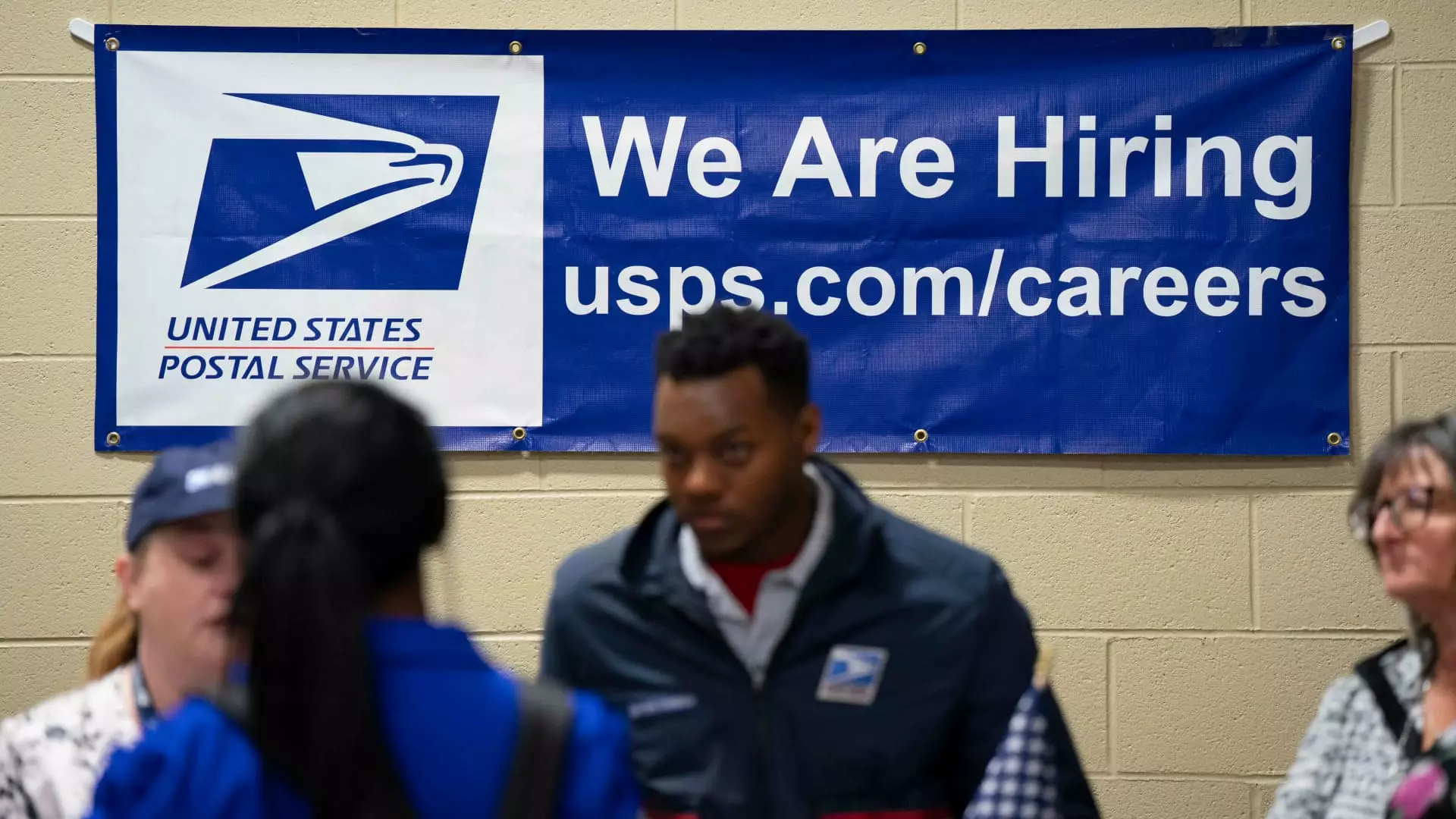May’s employment report from the Bureau of Labor Statistics delivered a complex portrait of the U.S. labor market. While headline figures indicated a modest increase in nonfarm payrolls—up 139,000—this statistic, although surpassing the Dow Jones analysts’ expectations of 125,000, feels somewhat like a thin veneer over what may be a more precarious reality. The artificially buoyant surface glosses over the understated turmoil lurking below. Combining an unwavering unemployment rate of 4.2% with stale assessments of job creation simply cannot disguise the unnerving shifts that signal potential trouble ahead.
The question must be asked: how much longer can this façade of employment growth sustain itself in the face of relentless external pressures, such as tariffs and fears of a slowing economy? With the unemployment rate also failing to budge on a broader front—hovering at 7.8% when factoring in discouraged workers and the underemployed—one might wonder if we are merely perpetuating an illusion of stability, staving off reality for another month.
The Workers’ Perspective: A Subtle Decline
In dissecting the components behind the numbers, we see that a significant portion of the job creation hailed in the report emanated from the health care sector, which added 62,000 jobs, outpacing its historical average of 44,000. This growth, which some may celebrate, actually hints at a troubling dependency on specific sectors for job stability. The leisure and hospitality industry contributed 48,000 jobs, while other sectors, such as government, shed 22,000 positions. This is not an isolated incident; it demonstrates a wider trend where certain industries are propped up while standardized government jobs shrink, illustrating a government workforce potentially hollowed out by a focus on efficiency over employment.
To add further concern, reports from various economists underscore the underlying shifts in employment dynamics, particularly through the lens of disparities in job classifications. The household survey—a more unpredictable barometer of employment—gestured unambiguously towards a loss of 696,000 workers overall. Moreover, the decrease of 623,000 full-time roles against a meager rise of 33,000 part-time positions paints a disquieting picture of a labor market that appears increasingly frail, with a worrisome move towards part-time employment rather than full-time, stable jobs.
Economic Headwinds: Tariffs and Uncertainty
The current report emerges from an economic environment beset by anxieties stemming from President Trump’s tariff policies. The fostering of fears regarding inflation and the ultimate effect of global trade conflicts looms large over both consumer and business sentiments. While sound indicators suggest we remain somewhat insulated from recession, chronic unease persists, casting a pall over future economic performances. Business leaders and stakeholders are keenly aware of the potential headwinds, acutely aware that any economic buoyancy could swiftly devolve into vulnerability.
As observers eye the Federal Reserve’s next move on interest rates, the prevailing caution among policymakers resonates loudly. Their reticence to budge reflects the delicate balancing act they must perform amidst pressures that threaten to toss the economy into tumult. With inflation fears tied directly to potential tariff impacts enshrined in the dialogue of federal officials, the sense of unease surrounding our economic landscape only amplifies.
The perceived strength in this latest jobs report, when ironically viewed through the lens of cumulative pressures, nurtures a profound skepticism. Brokers and economists speculating over “the other shoe dropping” encapsulate an unsettling notion that the apparent resilience in the labor market could fracture under external pressures. The workforce might yet experience strain in the upcoming months, and as we traverse this uncertain terrain, it’s impossible to shake the disconcerting feeling that today’s statistics could reflect a mirage, rather than a solid path toward long-term employment stability.



Leave a Reply